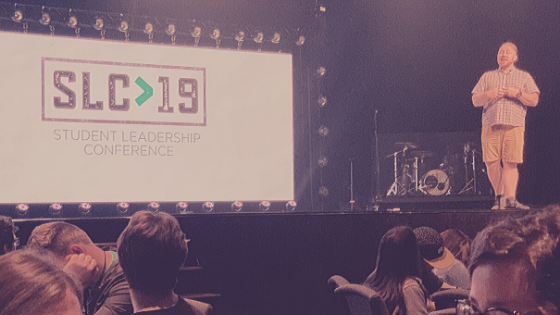Three Elements to starting a Student Leadership Team
As a Student Pastor, one of my desires for my students is that they would have ample opportunity to discover their gifts, exercise their talents, and grow to know their value in the Church as a whole. One of the best ways I have found to dig deeper and expand those opportunities is through our Student Leadership Team.
Now, I know that there are plenty of structures that are rolling around for how to plan and implement student leadership in youth ministry. But, for me a team that is formed at the beginning of each semester and runs through the school year is the vehicle that I have found to be best for our context. But how we got there is what I found to be the secret sauce.
After years of trying to figure out what was going to work for raising up leaders, we dedicated to three shared things that would aim to help form and forge our student leadership team. I’m pretty confident that these three elements, contoured for your context will help you start a Student Leadership Team of your own.
1. A Shared Experience
For us, this was Student Leadership Conference in Granger, IN. For the last two Summers, we have taken a group to this experience and it has helped to set us for the school year. We took around 10 each year and it provided a core of our students who had been thinking about goals, plans, and dreams that we had for the year. If you can make it to SLC, I highly recommend it.
However, the reality is that while the content was awesome and the environment of the conference positioned us very well, the bigger factor was the shared experience. It was an experience where each of us on the trip were focused on asking the question: “What is our leadership supposed to look like in this next year?” Eating together, having fun together, and hearing each other’s hearts were critical to this experience being the benefit that it was.
What we discovered was this little truth that is true in any context or culture: A shared experience gives us mutual language, common goals, and synergistic momentum that no team meeting can conjure up. I can’t overstate the value of a shared experience to get your team on the same page.
Logistically, we didn’t broadcast this event the first year. We personally invited students who we saw as leaders and as people who were already serving in dynamic ways or students who displayed a propensity toward leadership and serving their peers. This has become a major launching point for us at this point.
2. A Shared Culture
One of the best things we did for our student leadership team was collectively develop shared cultural expectations. We determined the things that would hold us back from truly accomplishing all that God wanted to put in front of our group and we decided to press into those things. Together, we came up with these obstacles and collectively we came up with the culture we wanted to have on the leadership team.
The reality was that most of this came out of our cultural desires for the entire student movement, but the student leaders recognized that if that was going to be a reality in our group, it had to be a reality in our leadership group. This has made accountability simple and more peer-to-peer. They want to accomplish the things in front of us, together.
It has been clear that this approach has given a level of responsibility over to the students. They own it because they helped create it. You create more space for more ownership when you create culture, collectively. Sure, there need to be some guardrails that come from the leader, but giving freedom on the execution part gives more opportunity for expressing the gifts and knowledge of a generation to needs to be believed in.
3. A Shared Ministry Goal
Out of our shared experience and our shared culture, student leaders got to get a better glimpse of the WHY behind the WHAT we are doing in our gatherings and in our discipleship process. Once they began to see all that goes into accomplishing that overall goal, they began to see how the parts equal the whole and the part that they can play to see that end goal come to fruition.
Did it happen overnight? Well of course it did, because leadership development is a formulaic plan that produces the same results every time, regardless of who is leading it and who is being led through it, and clearly I have all the answers. No, I would actually argue that we haven’t fully achieved all that we want to see in student leadership. We still have some steps to take to get to where I would have originally desired us to get.
However, rather than just give up because we haven’t gotten there yet, we are playing the long game. This next Summer will be three years of attending SLC and having that concentrated time together, and a third school year to refine our process and evaluate what we are doing. Do I feel like we are starting to hit our stride, sure. But the fact is that it is hard to grow things, and that’s especially true in leadership development. Developing leaders is a long game that requires patience and evaluation to be most effective and to produce long-lasting fruit.
What are your thoughts? What have you done with student leadership in your context? What are you nailing right now? What do you wish you were doing better? Leave your thoughts in the comments below!







